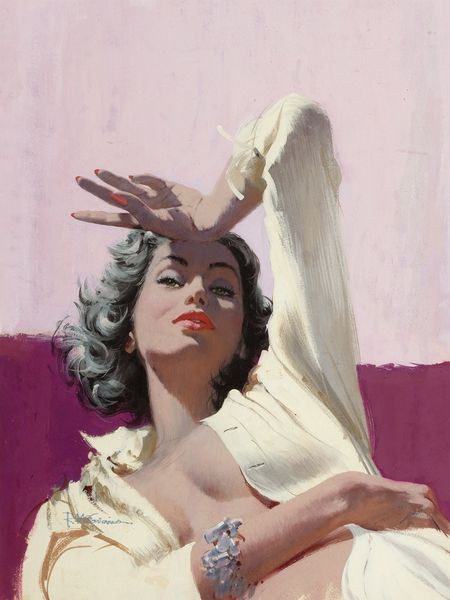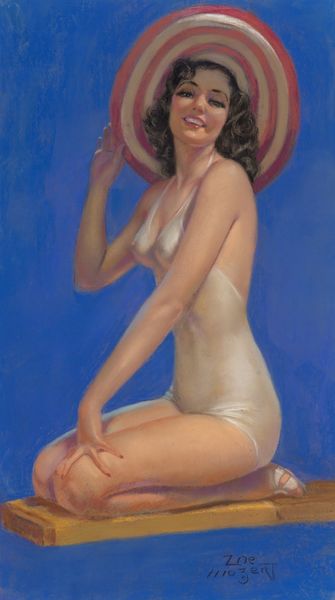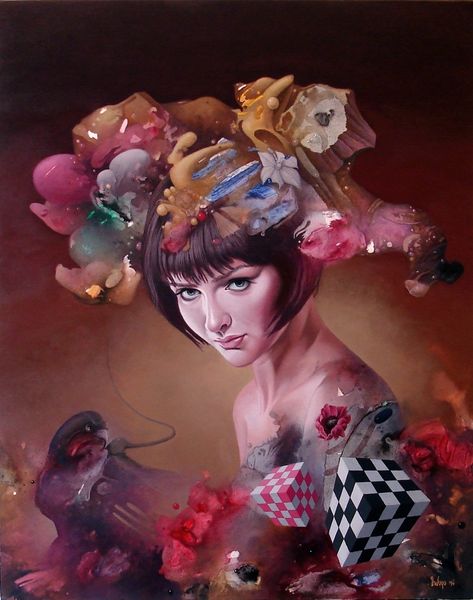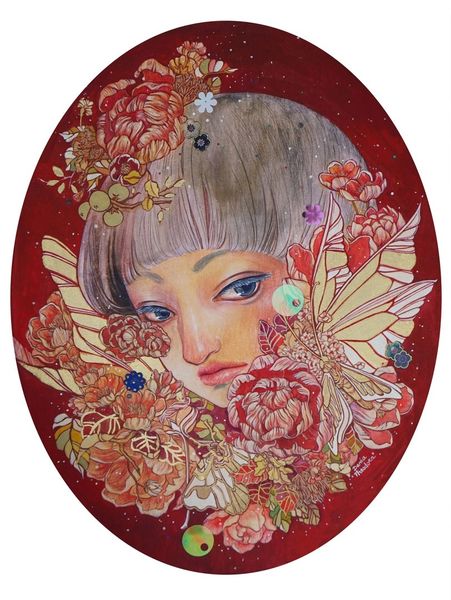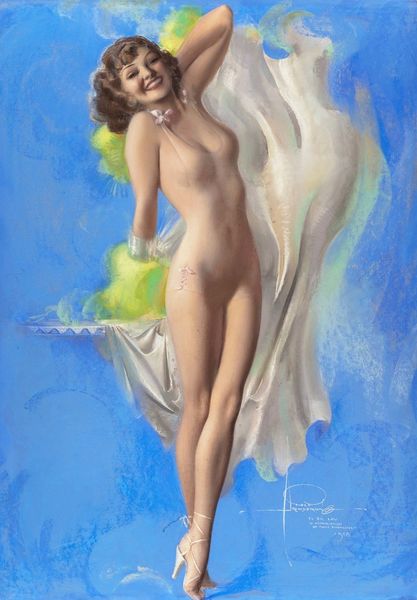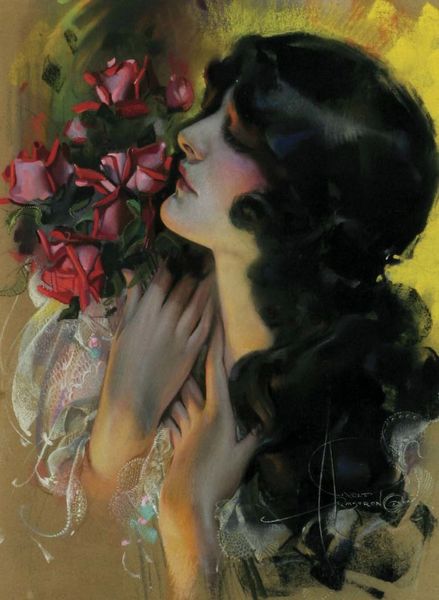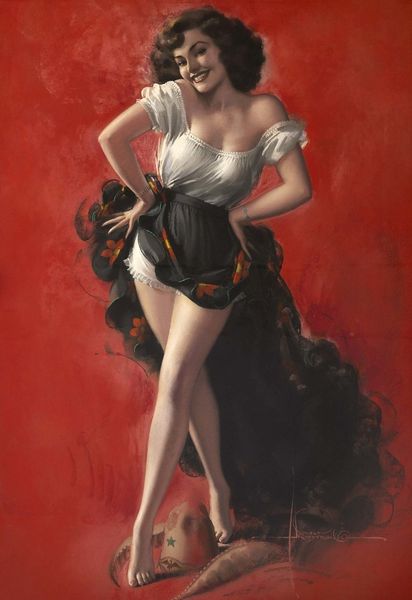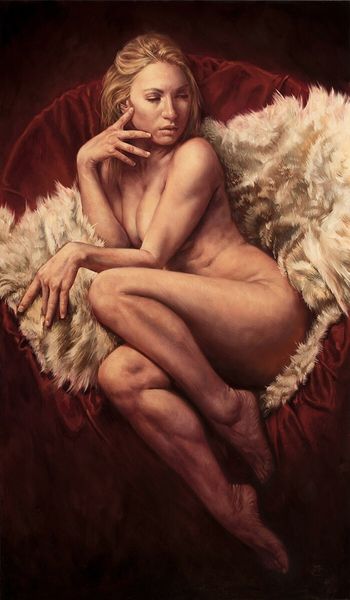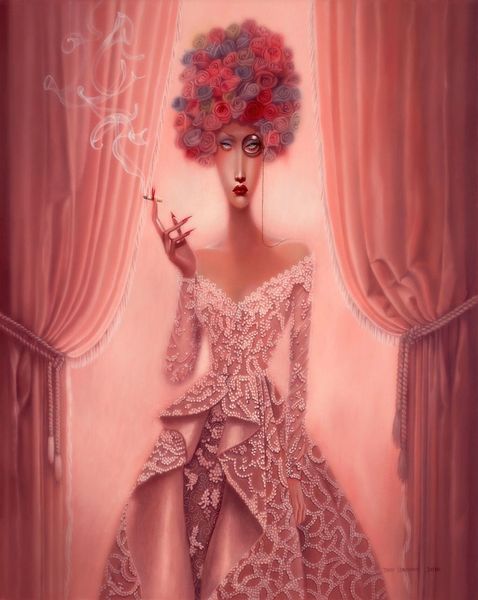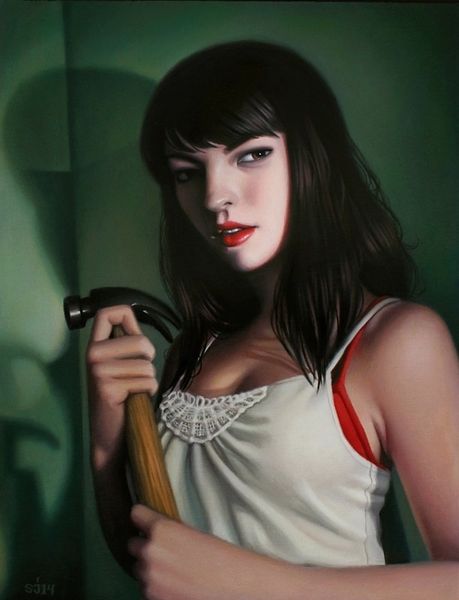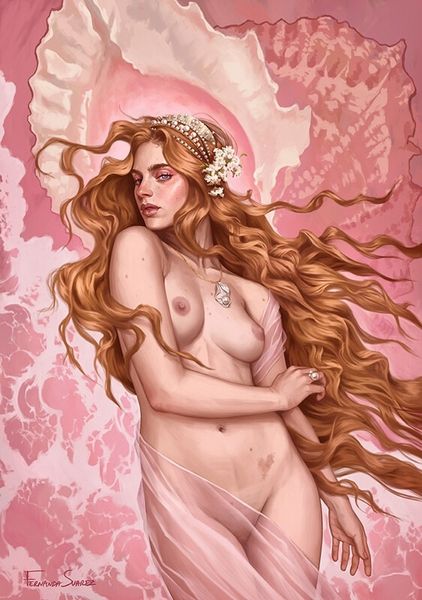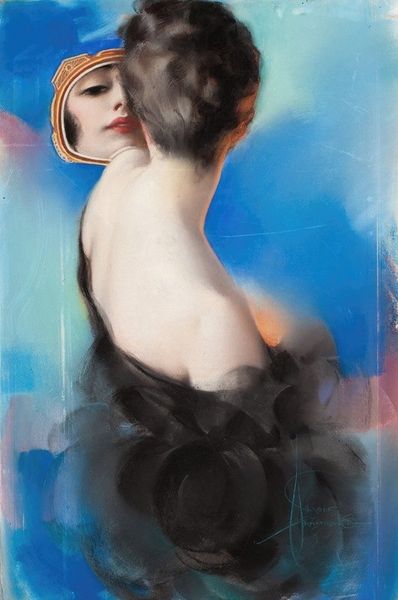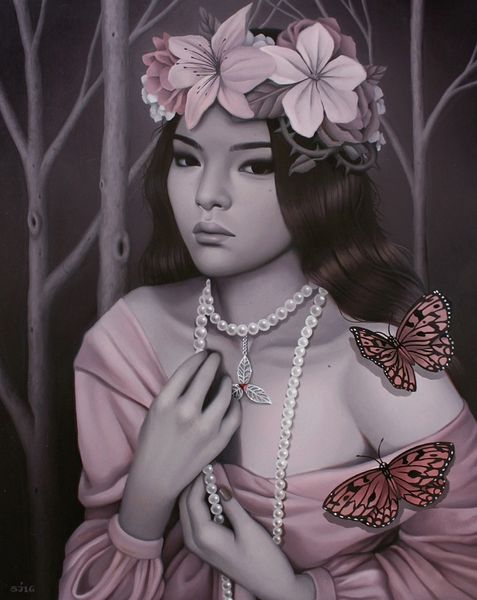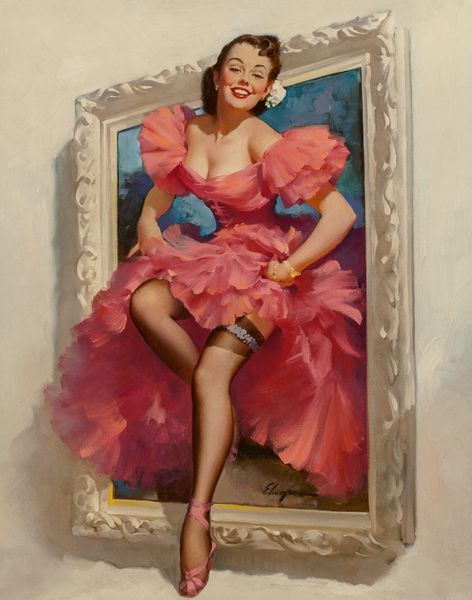
oil-paint
#
portrait
#
oil-paint
#
figuration
#
portrait reference
#
portrait head and shoulder
#
intimism
#
animal portrait
#
animal drawing portrait
#
portrait drawing
#
facial portrait
#
academic-art
#
portrait art
#
fine art portrait
#
celebrity portrait
#
digital portrait
Copyright: Modern Artists: Artvee
Curator: Let's discuss this intriguing piece—Zoe Mozert's "Iris." It appears to be an oil painting, a head and shoulders portrait set against a vibrant backdrop. Editor: My initial feeling? It exudes a dreamy, almost ethereal quality. The soft lighting and the model's wistful expression create a strong sense of intimacy, bordering on vulnerability. The pose appears artificially demure; this is carefully constructed to disarm the male gaze and signal something feminine for commercial appeal. Curator: Exactly. Mozert was known for her pin-up art, which occupied a complex space. While it presented an idealized version of feminine beauty aligned to market appeal, it also gave women agency in visual culture during times of social change. The pin-up’s construction reflected societal expectations for women even while acknowledging their desirability, which was considered risqué at the time. This allowed them a degree of visibility, especially in a male-dominated art world. Editor: I see that interplay. On one hand, she’s framed by traditionally "feminine" symbols—the bow, the flower—the gaze feels very direct. What statement do you feel it made regarding her audience? Curator: It speaks volumes, engaging in the dynamics of power and objectification prevalent at the time. Consider how pin-up art, despite being ostensibly "for" men, became a source of empowerment for some women who saw themselves represented. Mozert also broke boundaries in other subtle but profound ways—in terms of depicting ethnicity, body types, etc. How does Mozert handle skin tone? Editor: There is almost an intentional hyper-real quality, the light almost bounces off of the surface—a nod to commercial illustration. The coloring does seem somewhat idealized, further embedding the figure within a landscape of beauty standards but, you’re right, with perhaps some subversive intentionality. Curator: These works reflect ongoing tensions between portraying women in a limited, commodified way and simultaneously recognizing their power as consumers and subjects. She was ahead of her time in many ways. Editor: Ultimately, Mozert presents us with a reflection of how women were navigating constraints—and how they challenged such boundaries through imagery that negotiated the politics of display and desire. Thanks for sharing! Curator: Likewise, such important nuances! A real case study in visual rhetoric, this work.
Comments
No comments
Be the first to comment and join the conversation on the ultimate creative platform.
